How To Do The Turkish Get-Up
Standing up has never been so tough
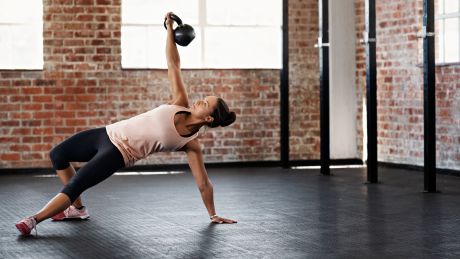
Getting up is a movement most of us do without ever thinking about it. After all, we get up out of bed every morning. Sure, it might seem tough sometimes, but that’s usually due to a heavy night the day before, rather than any difficulty with the movement itself.
However, if you were to lie down and get back up to a standing position ten times right now, you might be surprised how tiring it is. Then consider adding a kettlebell into the mix and having to hold it in exactly the right way when you stand up. Yes, the Turkish get-up is tough.
The movement involved in standing up while holding the weight challenges the strength of muscles all over the body, as well as testing your balance and co-ordination. You might not believe us now, but when you wake up the morning after a hefty round of Turkish get-ups suffering DOMS in muscles you didn’t even know existed, you’ll have a new appreciation for the exercise.
To get the most out of your get-ups, you need to nail the form, which is trickier than with most exercises. It involves a series of movements, each of which has to be done in a very particular way. For expert advice, Coach spoke to Chris Mandac, personal trainer and Third Space kettlebell expert.
How To Do The Turkish Get-Up
From a lying down position, stand up while holding a kettlebell. But, of course, it’s more complicated than that. Here’s Chris’s guide:
1. “Lie flat on the floor, face up, placing the kettlebell 12 inches beside your right arm. Roll onto your right and grab the kettlebell with two bent arms. This is important; trying to lift with just one arm will damage your shoulders.”
2. “Roll onto your back firmly gripping onto the kettlebell. Let go of it with the left hand, and bench-press the weight up with your right. Make sure your arm is fully vertical from the floor and your elbow is locked out. Unless directed, the kettlebell will now be held in this position.”
Get the Coach Newsletter
Sign up for workout ideas, training advice, reviews of the latest gear and more.
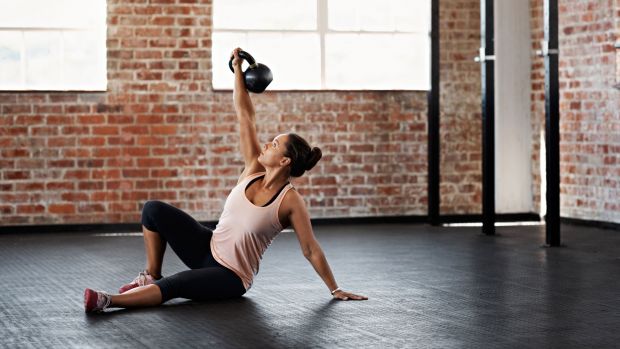
3. “Bend your right knee and plant your foot firmly onto the ground. Lift the right shoulder off from the floor, sort of like doing a twisting ab crunch, supporting your weight on your opposite elbow.”
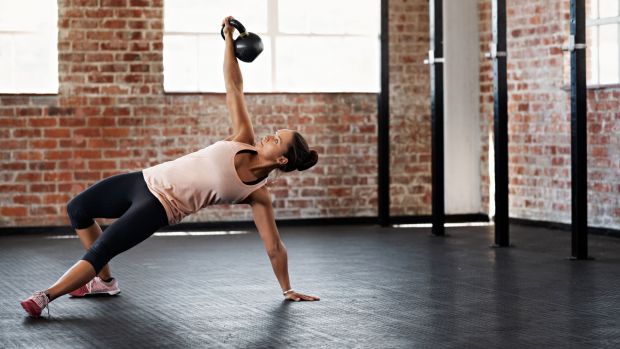
4. “Pop off from your left elbow onto your hand, the hand should be slightly behind but out wide. Raise your butt and extended left leg off the floor. With your left hand and right leg planted on the ground, begin to pass your left leg underneath you, knee and toes on the ground.”
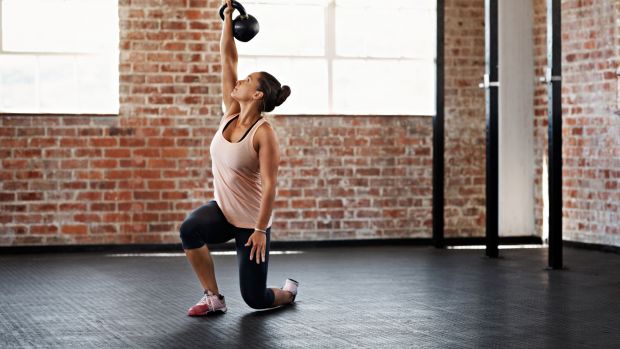
5. “Stand up and hold the position, then return to the starting position by performing all steps in reverse order, in one smooth movement. Once you get proficient, set a timer for five, 10 or 15 minutes and do as many TGUs as you can. Trust me, you’ll be breathing.”
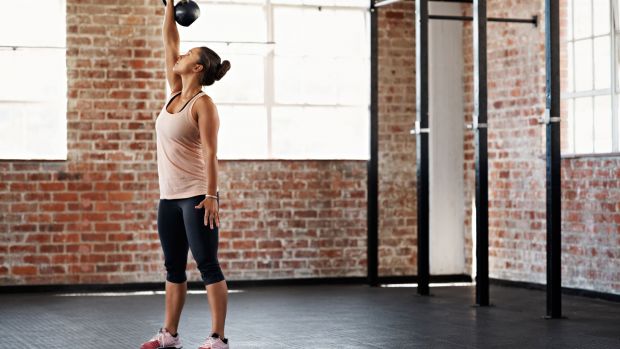
Turkish Get-Up Benefits
“You’ll develop strength all along your spine and tremendous stability in your shoulder,” says Mandac. “It’ll help with your posture, and you’ll develop strong legs and feet.”
“Moreover, the TGU is also a tremendous core exercise. Getting up off the ground is a great skill and it’s your core that makes this possible. Doing it with weight makes it that much better in terms of body development.”
Turkish Get-Up Form Tip
The kettlebell Turkish get-up is a move that builds strength and balance through your whole body, as well as teaching you to create tension and stability in a variety of positions. With lighter weights you might get away with bad form, but as you go heavier you’ll need to keep the weight directly overhead, allowing you to lift it efficiently. Start with a shoe balanced on top of your fist to teach yourself the form, then progress to a kettlebell. For a real challenge, you can eventually move on to doing this with a barbell.

Nick Harris-Fry is a journalist who has been covering health and fitness since 2015. Nick is an avid runner, covering 70-110km a week, which gives him ample opportunity to test a wide range of running shoes and running gear. He is also the chief tester for fitness trackers and running watches, treadmills and exercise bikes, and workout headphones.









